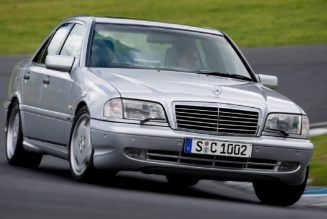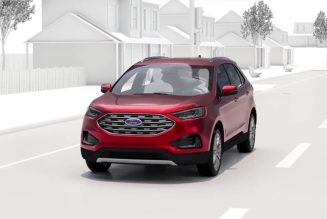Purchasing a new car can be an exciting, emotional, from-the-gut decision—and it can be a punch in the gut when you later discover how much it costs to insure or fuel that car, or how little it’s worth when it’s time to find new wheels. Ownership costs, rather than the mere transaction price, should be at the forefront of your purchasing criteria. Luckily for you, MotorTrend’s partner, IntelliChoice, has you covered.
IntelliChoice’s 5-Year Cost to Own and Best Overall Value Awards
IntelliChoice has been at the forefront of analyzing vehicle ownership costs for more than 30 years. Our Best Overall Value of the Year (BOVY) Awards recognize those mainstream vehicles whose total cost of ownership is significantly lower than expected compared to other models in the same class. These vehicles are not just excellent values—they are the top-ranked models in their respective classes. Although there are many factors to consider when buying a new vehicle, the annual BOVY winner list is a quick reference that spotlights the vehicles that promise the best return on your investment.
Value Ratings
In addition to our BOVY awards, IntelliChoice assigns a value rating to every mainstream model sold in the U.S. Models receive a rating of Excellent, Above Average, Average, Below Average, or Poor. These value ratings highlight the true standout vehicles in each class and are based on the total of depreciation, fuel, insurance, financing, maintenance, fees, and repair costs. Overall value ratings are determined by taking the individual results of each trim within IntelliChoice’s model line groups and generating an average, which is then compared to the other model lines in the vehicle’s class. The top 10 to 15 percent of models within a class receive an Excellent value rating.
Interestingly, history shows that in the vast majority of cases, a redesign has no major effect on a model’s overall value rating—but when there is a change in the rating, it is more likely to be a small improvement. In addition, although a model’s overall value rating may vary from year to year, it’s fairly uncommon for it to change more than one grade up or down.
SmartChoice Awards
IntelliChoice’s SmartChoice awards are given to models that perform especially well in one or more individual ownership cost areas. These vehicles are either the best or among the best (top 10 percent) in their respective classes and are named a SmartChoice in their particular ownership cost areas. We present SmartChoice awards for retained value, total ownership costs, operating costs, fuel, maintenance, and repairs.
Find the Best Value by Trim, Too
IntelliChoice also rates vehicles by specific trim. Once you determine which model you’re interested in, navigate to the IntelliChoice tool on that vehicle’s buyer’s guide page and use the trim selector to see how a particular trim rates within the model lineup. Because many vehicles have numerous trim levels and the price of each can be dramatically different, some trims may be better values than others. Higher trims may not hold their value as well. (A lot of high-tech electronics and other options grow obsolete quickly, and that tech may entail higher maintenance costs.) Also, higher trims may have powertrains that reduce the fuel efficiency of the vehicle. Any or all of these ownership cost areas can negatively impact the value rating.
Now to look at the individual areas of ownership costs.
Depreciation
It’s a sad fact of life that every vehicle’s value depreciates—some much more than others. This figure is our proprietary calculated projection of how much a vehicle’s value will decrease over five years. Each trim level of every model is individually analyzed by reviewing the historical used value trends of a given vehicle’s ancestors. This is almost always the largest ownership cost area and thus has the most impact on a vehicle’s overall costs and value rating. We assume that after five years you sell your vehicle in a private-party transaction (not a trade-in to a dealer) and that the vehicle is in good condition with 70,000 miles on the odometer.


Fuel Cost
This is our calculated five-year total cost to fuel a vehicle, based on EPA mileage figures. We assume your driving patterns are 60 percent highway and 40 percent city and that you drive 14,000 miles per year. (Although right now your annual driving mileage is likely far less, keep in mind we are looking five years into the future.) As this is written, the current fuel price assumptions are $2.61 per gallon for unleaded regular, $3.02 for unleaded midgrade, $3.27 for premium, and $3.04 for diesel, all subject to inflation of 0.5 percent. These prices are based on Energy Information Administration six-month averages for self-service fuel.
Insurance
This is our determination of the total cost to insure a vehicle for five years. Of all the ownership cost areas, this will vary the most depending on you and the coverages you select. By running our calculations with a “typical” driver, we can at least allow you to make apples-to-apples comparisons between vehicles. We assume the principal driver is under 65, lives in a suburban or urban community, and has more than six years’ driving experience with no chargeable accidents. We also assume the vehicle is for personal use. These costs are based on limits of $100,000/$300,000 for personal liability, $50,000 for property damage, $25,000 for medical expenses, and $25,000/$50,000 for uninsured motorist coverage. We also assume comprehensive/collision deductibles of $500/$500.
Financing
This is simply the total cost of interest when financing a vehicle. We assume you’re making a 10 percent down payment on a 60-month loan with an annual interest rate of 4.61 percent. Your APR will depend on various factors, including your credit report, the brand you’re interested in, the time of year, and whether you’re preapproved for financing at the dealership. You may qualify for a better rate than the one we use for our calculations, but our financing costs do illustrate how much more interest you’ll pay as the vehicle’s MSRP goes up.
Maintenance
This is our projected total cost to maintain a vehicle for five years, based on services performed generally at manufacturer’s recommended intervals. Other services are done at selected intervals. The cost per service is based upon industry-standard service times and national labor rate averages. Parts prices are based on manufacturer’s suggested list prices where available. In our calculations we factor in manufacturers that include free scheduled maintenance.
State Fees
This is our calculation of the total cost of title, registration, and miscellaneous initial fees, as well as renewal fees for five years. These fees will vary depending on the weight, MSRP, and class of the vehicle, and as each state has its own rules and regulations—oftentimes staggering in their complexity—we calculate fees for every possible vehicle and state combination and then determine a sales-weighted average for each vehicle.
Repairs
Despite the greatly improved reliability of today’s cars, some repairs are going to crop up. This is our determination of the five-year total cost of expected repairs to your vehicle. The figure is based on extended service contracts that will pay for repairs for at least five years or 70,000 miles with no deductible. Service contract pricing is adjusted down for a reasonable profit and a longer-than-standard manufacturer warranty.
Other Factors—Average Sales Tax
For our calculations we determine a national sales-weighted sales tax, which we currently have at 6.5%. Some states have vehicle-purchase-specific tax rates or an ad valorem tax, which we take into account. In addition, year one title and registration fees are included, and they are based on a state sales-weighted average and on IntelliChoice’s most recent fair market price for a given vehicle.
Plug-in Hybrid and Electric Vehicle Tax Credits
If a vehicle is eligible for plug-in hybrid or electric vehicle tax credits, we’ll indicate that under our ownership cost graph. Keep in mind these credits can disappear over time, and you may not be eligible for them at all depending on your tax situation. That’s right: You must have a federal tax liability at the time you purchase a plug-in hybrid or electric vehicle, and you can claim a credit only up to that amount. These credits are not rebates or incentives.
Brad Taylor contributed to this article.
The post How We Value Cars: IntelliChoice Ownership Costs Explained appeared first on MotorTrend.









